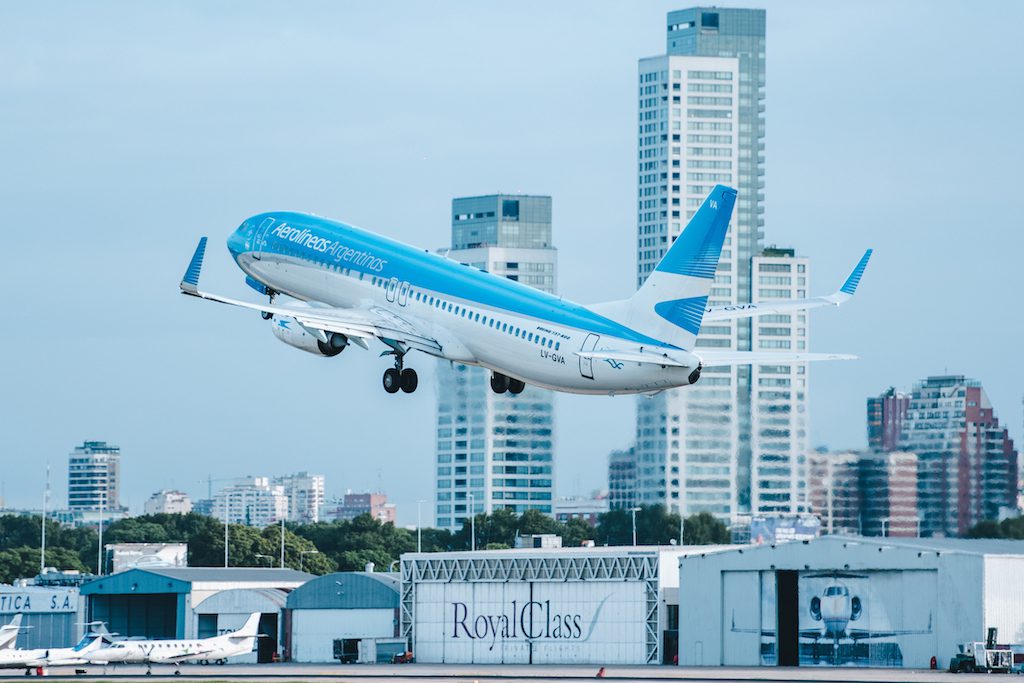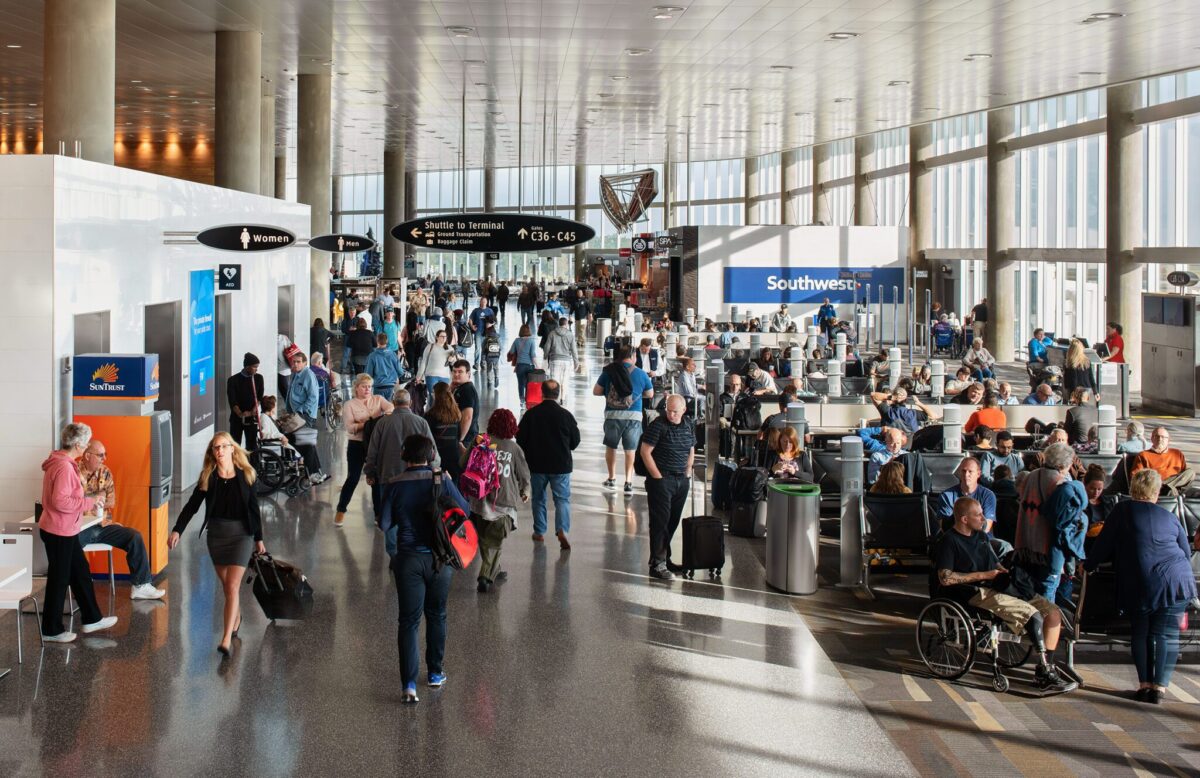Argentina’s State-Run Airline Tries Evolving for a Fragile South American Market

Skift Take
Business and politics in Argentina are inextricably linked, and aviation is no exception.
In the nearly four years since business-friendly conservative President Mauricio Macri took office, the country’s airline industry has become more competitive. Low-cost entrants including Flybondi, Norwegian Air Argentina and JetSmart have burst onto the scene offering lower prices on domestic routes, and the government is picking up the tab for multi-million dollar infrastructure improvements at main airports. In July, Argentina’s airlines welcomed an all-time monthly record of 1.5 million passengers flying within Argentina—a 61 percent increase compared with four years earlier.
To keep pace, flag carrier Aerolineas Argentinas has been making its own changes. The airline — whose leadership is influenced by the same administration pushing for a more competitive airline industry — has made strides to become more efficient, customer-focused and financially sound. However, amid the country’s ongoing economic woes and possibility that the nation could revert to a populist government in 2020, there are questions about what Aerolineas—and the larger Argentine aviation market—will look like in the future.
“The aviation market in Argentina has experienced a great transformation in these four years,” Aerolineas Argentinas President Luis Malvido told Skift in a phone interview translated from Spanish.
New low-cost carrier entrants now hold just over 20 percent of the market share for domestic flights in Argentina, the latest figures from the country’s civil aviation authority show. With this new competition, Aerolineas has spent the past four years trying to get more nimble. But there’s more work ahead.
“Within this scenario, we found ourselves with an Aerolineas that had many opportunities to improve in 2015,” Malvido said, “not only because of its low productivity of its personnel and low-fleet utilization, but also as a company that had many outdated aspects and ideology.”
Customer Service Focus
Malvido, who joined the carrier after holding several international positions for telecommunications provider Telefonica, has been working to implement a three-year strategic plan focused on improving efficiency, customer service, digital systems and network.
The airline has invested in several projects, including launching a new website and mobile app, implementing a new maintenance management system and contracting technology to boost cargo revenues. It has also made operational improvements, such as cutting its Boeing 737-800 turnaround time from 50 to 40 minutes to improve utilization. It has not, however, cut headcount; the company has about 12,000 employees, a level that has been steady for the past few years.
Malvido admits the company still has work to do. “Until now, [Aerolineas] has been a company with little customer focus, dedicated to transporting passengers,” he said. “But the concept of the client was almost non-existent.”
Aerolineas has seen an opportunity to boost revenues by providing more perks for its highest-value customers—the 5 percent of travelers who purchase more than $100,000 in tickets each year and represent about a quarter of all income. It also launched a program last December to “match” flyers’ high-ranking hotel status with an elite level in its Aerolineas Plus program.
“Something that is obvious to the vast majority of international companies—but for us it was the first step—is to generate a customer base, segment customers by behavior and value, and to give them attention and benefits according to the customer’s loyalty,” Malvido said.
Financial Difficulties Continue
Those investments may boost customer satisfaction, but Aerolineas still isn’t making money—and it’s not clear if or when it will.
Malvido said the carrier is now estimating it will require between $245-$275 million in government subsidies this year. That estimate is up from an earlier projection of $170 million, and the nearly $200 million it needed in both 2017 and 2018. But he underscores that it is much better than 2012, when it needed nearly $900 million in government funds.
Malvido said rising oil prices, a strong component of costs in dollars in light of the Argentine peso’s devaluation and higher engine maintenance costs for Embraer E190s contributed to this year’s figure. The E190s are operated by Austral, a domestic airline owned by the company.
As it continues to face lingering dollar-denominated debt from past aircraft purchases, the carrier has been focused on finding ways to cut costs. Since 2016, it claims it has slashed more than $100 million from its budget by renegotiating key contracts, plus saving on expenses such as hotels and catering. However, the airline’s 2018 costs were up 18 percent year-over-year due to rising oil prices and the Argentine peso devaluation.
With cost control a focus, Aerolineas has delayed some passenger experience improvements so it can focus on short-term revenue gains. It has not yet started a Boeing 737-800 fleet retrofit program announced in 2018. And the carrier has yet to move forward on a plan to install Wi-Fi on its fleet, although airline spokesman Fernando Fagioli said it has narrowed down its options to two technologies.
The carrier also has yet to announce a replacement for Austral’s 26 E190s. Fagioli said this decision is on hold because the still-grounded Boeing 737 Max is under consideration.
As for the five Max aircraft already in Aerolineas’ fleet, Malvido said the grounding has not caused any major disruptions but that airline executives continue to have “very adult, very responsible” conversations with Boeing about how to recoup any costs incurred.
Labor Struggles
Consumers in Argentina arguably have been big winners of government policies designed to increase connectivity.
However, not everyone is thrilled about Macri’s so-called “aircraft revolution”— namely labor unions, which have raised concerns about how the plan has affected wages, among other issues. They are also worried about the role of international companies in Argentina’s aviation industry.
So, even as Aerolineas seeks to make structural improvements to its customer service, labor tensions have affected its operations in practical ways. The carrier calculates 12 demonstrations this year have affected flight plans of more than 140,000 passengers, and two more strikes have taken place in recent days. That’s the same number of disruptions in all of 2018, and four times as many as in 2015, Malvido said. Strikes of airport personnel and pilots have affected other airlines as well, but Aerolineas is significantly exposed because of its extensive operations.
Still, Aerolineas’ strategy and leadership could become more sympathetic to labor issues if Argentina sees a new president after elections on Oct. 27. After a preliminary round of voting in August, pollsters are predicting a huge win for a ticket consisting of Alberto Fernandez and former president Cristina Fernandez de Kirchner. (Aerolineas was re-nationalized in 2008 under her leadership.)
Rice University political science professor and Argentina expert Mark P. Jones said Aerolineas and the wider market could see changes with a Fernandez win, noting it would be “shocking” if Aerolineas didn’t see new leadership under that scenario.
“We’re likely to see both a new CEO as well as a change in the business model that’s more sympathetic to the unions,” he said. Fernandez would be able to determine who runs the airline, as well as its policies on a “variety of issues ranging from labor to markets,” he said.
Jones said one silver lining of a Fernandez win could be fewer disruptions, work stoppages and cancellations, although the carrier could run a higher deficit. He said he thinks the administration could also try to stymie low-cost carrier growth.
“One way to reduce the deficit in Aerolineas is to reduce Aerolineas’ labor costs—well, they’re not going to do that,” he said. “The other way, though, is to allow Aerolineas to charge higher prices, and one way you can effectively allow Aerolineas to charge higher prices is by squeezing the competition.”
While these new airlines have successfully helped boost new passengers in Argentina, they have also faced challenges. For example, Avianca Argentina (technically a separate company from the Colombian airline) ceased domestic operations in June after facing financial issues, and the low-cost airlines now operating at El Palomar Airport near Buenos Aires are now preparing for restrictions on nighttime flights there.
While Malvido hopes the investments in digitalization, efficiency improvements and customer service focus continue, he said the network strategy could change under new leadership. The carrier has added an aggregate of 18 routes in the past three years, focusing on increasing domestic flights that do not touch Buenos Aires and cementing Argentina’s second-largest city of Córdoba as a hub. It also closed routes, including flights from Buenos Aires to Barcelona and Havana, plus Brasilia and Belo Horizonte in Brazil.
Even with the low-cost competition, Aerolineas currently leads in market share and has been growing its passenger numbers. It raised its passenger count in August by 6 percentage points compared with the previous year, and government statistics show the flag carrier currently leads Latam Airlines in domestic and international market share. Malvido said Aerolineas has been responsible for 40 percent of the 62 percent growth in domestic flights in the past four years.
While there are many outstanding questions about what Aerolineas will look like in the next few years, Malvido said he continues to stay focused on the day-to-day operations.
“It’s still very early to start to speculate about what will happen inside one of the state companies in the hypothetical case that there is a change in the government,” Malvido said.




